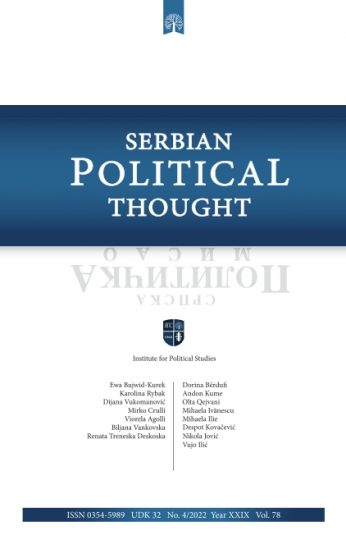Main topic
spt1/2015
International Positioning of Serbia in the Era of Pax Americana
Abstract
In this paper, the author deals with the concept and practice of nation branding, which he perceives as one of the media used to preserve the economic and political predominance by world’s leading power. In the first part of the paper, the focus is on the concepts of identity, image and propaganda, commonly associated with branding. Further on, the author suggests a value frame in which the actors of liberal capitalism utilise nation branding in order to pursue their interests and demonstrates the evolution of values in Serbia at the turn of the century, as a precondition of nation branding.
References
- Anholt, S. (2008) „Branding places and nations“. Simon Anholt [online]. Available at: http://www.simonanholt.com/Publications/publications-other-articles.aspx [Accessed 10.01.2015].
- Anholt, S. (2009) „Nation ’Branding’: Propaganda or Statecraft?“. Simon Anholt [online]. Available at: http://www.simonanholt.com/Publications/publications-other-articles.aspx [Accessed 10.01.2015].
- Kosović, N. (2013) „Meka moć Ruske Federacije“. In: Meka moć država. Beograd: Udruženje za studije SAD u Srbiji & Centar za društvena istraživanja.
- Leonard, M. (2002) Public Diplomacy. London: The Foreign Policy Centre.
- Lippman, W. (1922) Public Opinion. New York: Harcourt Brace.
- Louw, E. (2010) Roots of the Pax Americana: Decolonization, development, democratization and trade. Manchester: Manchester University Press.
- Louw, E. (2013) „Soft power, being attractive to others, and nation branding in an epoch where the Pax Americana sets the pace“, in: Ecquid Novi: African Journalism Studies, 34(3): 141-148.
- Nimmo, D. (1970) Political Persuaders. New Jersey: Prentice-Hall.
- Nye, J. (1990) Bound to Lead: The Changing Nature of American Power. New York: Basic Books.
- Pantić, D. and & Zoran Pavlović (2007) Javno mnenje: Koncept i komparativna istraživanja. Beograd: Institut društvenih nauka.
- Scott, W. (1965) „Psychological and Social Correlates of International Images“. In: Herbert Kelman (ed.) International Behavior. New York: Holt, Reinhart and Winston.
- Slavujević, Z. (2009) Političko komuniciranje, politička propaganda, politički marketing. Beograd: Grafocard.
- Slavujević, Z. (1992) „Od lošeg identiteta do još lošijeg imidža“. In: Novinarstvo, Year XXVII(2-4). Beograd: Jugoslovenski institut za novinarstvo.
- „Srbija u medijskom ratu“. In: Novinarstvo, Year XXVII(2-4). Beograd: Jugoslovenski institut za novinarstvo.
- Volcic, Z. and Andrejevic, M. (2011) „Nation Branding in the Era of Commercial Nationalism“, in: International Journal of Communication, 5: 598-618.
- Атлагич, С. (2014) „Политическая коммуникация: к проблеме имиджа России и его роли в процессе реализации ее интересов за рубежом (на примере Сербии)“. У: Научные ведомости Белгородского государственного университета, 8(179).

